Hello! Congratulations to Sara T. who was our quarterly winner for the Puzzler Challenge. I sent Sara a sampler pack of my cards earlier in the week. I’ll do another drawing on the first day of spring, which yes, seems like a long way off. You’ll have lots of chances to get your name in the drawing.
There is no puzzler this week as I’m going to take a few weeks off for the holidays. I’ll be back again with a new puzzler in January. Happy holidays to you and your loved ones. I hope you make time for the important things like family, friends, and getting outside to enjoy the gifts from Mother Nature.
The answer to last week’s puzzler was a barred owl, not to be confused with a barn owl. These are real and separate species.
Here’s a BARRED owl, named for the vertical bars on their abdomen and horizontal bars on their chest.
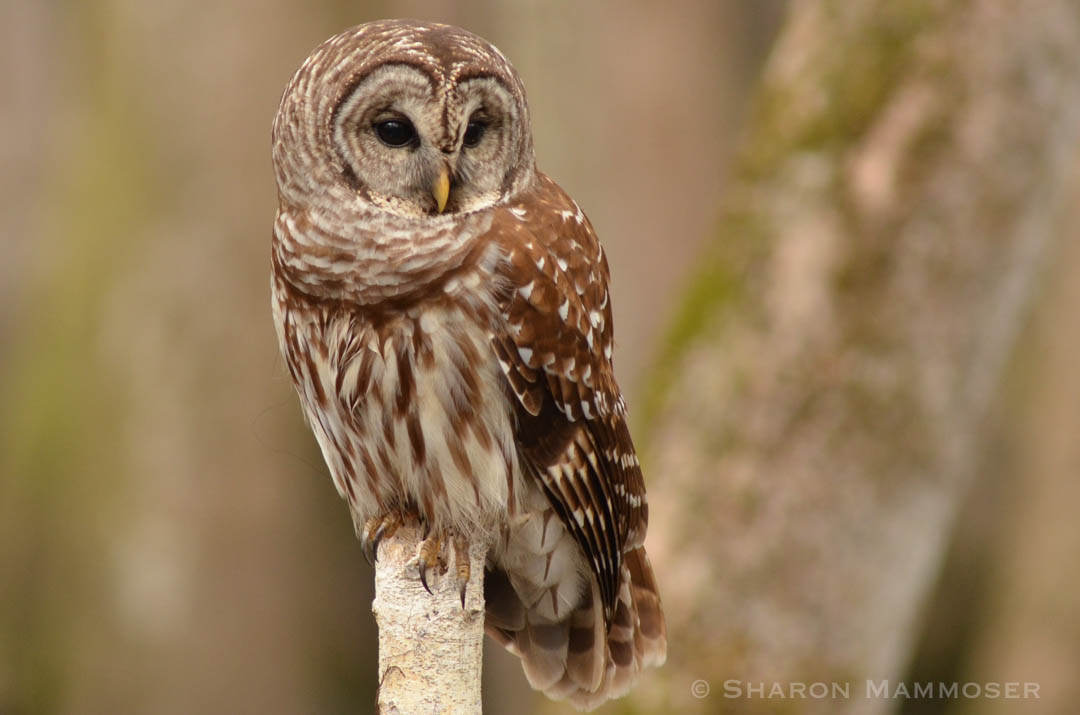
Here on the other hand is a BARN owl. Many people think they are the same.
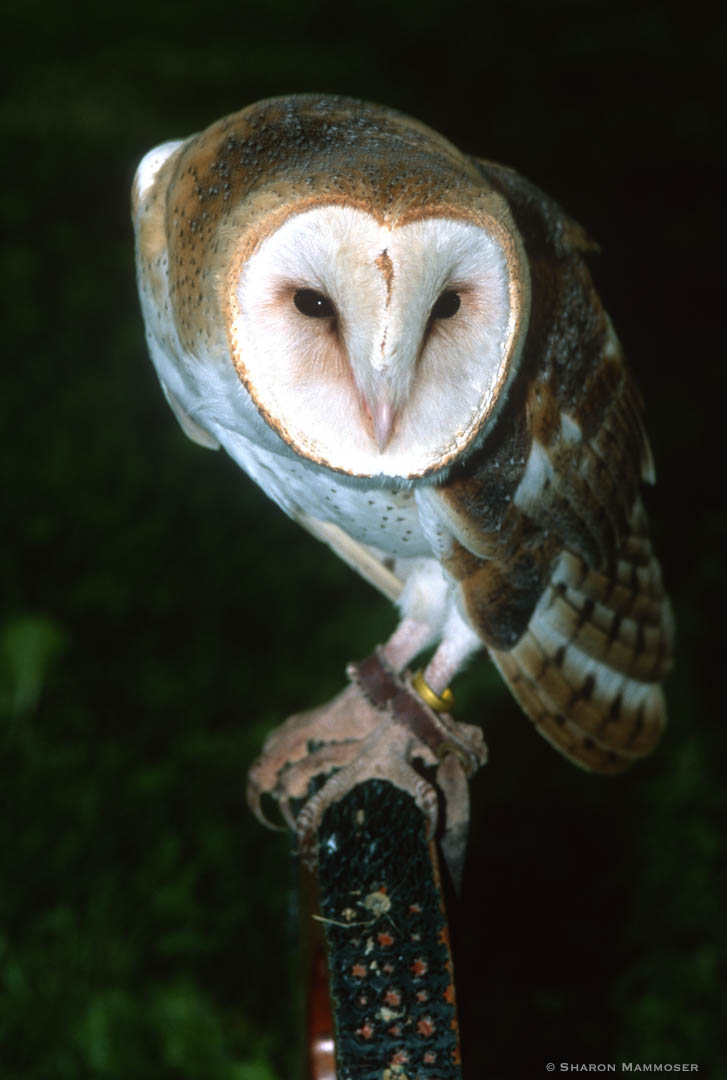
Barred owls are one of the most common species of owls in North America. They prefer mature forests where there are lots of tree cavities and prey, which is mostly small mammals like mice and voles, though they will also eat crayfish and crabs. The find a perch in their territory and watch for prey from it. Like other owls the edges of their feathers are soft so they can fly silently, able to sneak up on unsuspecting prey.
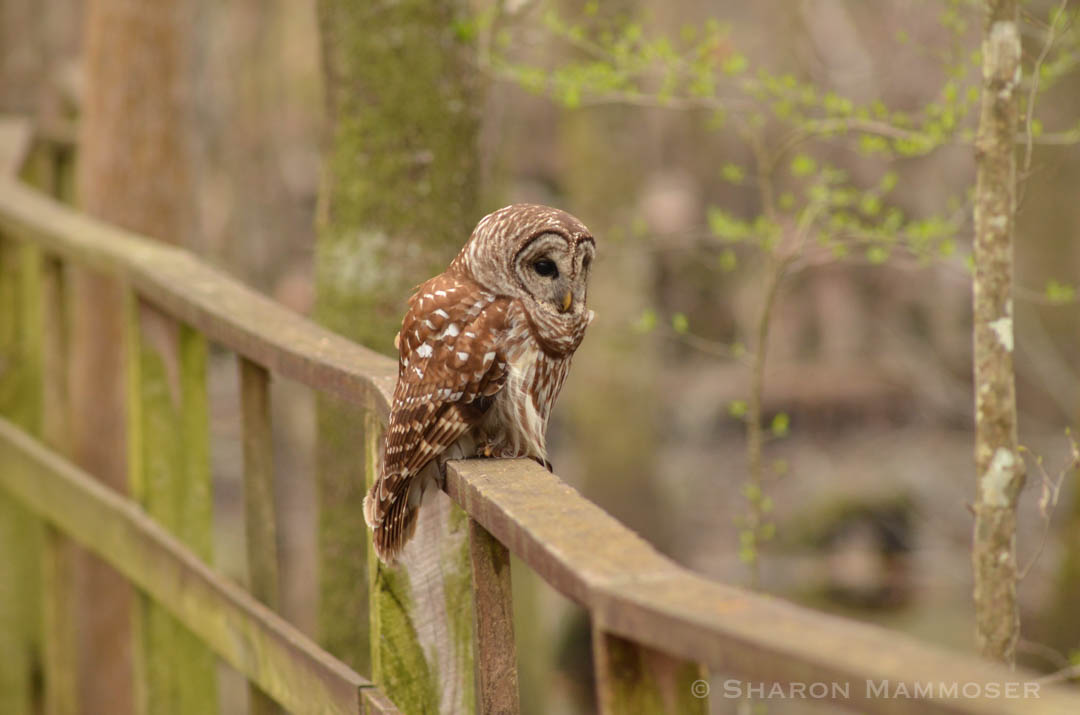
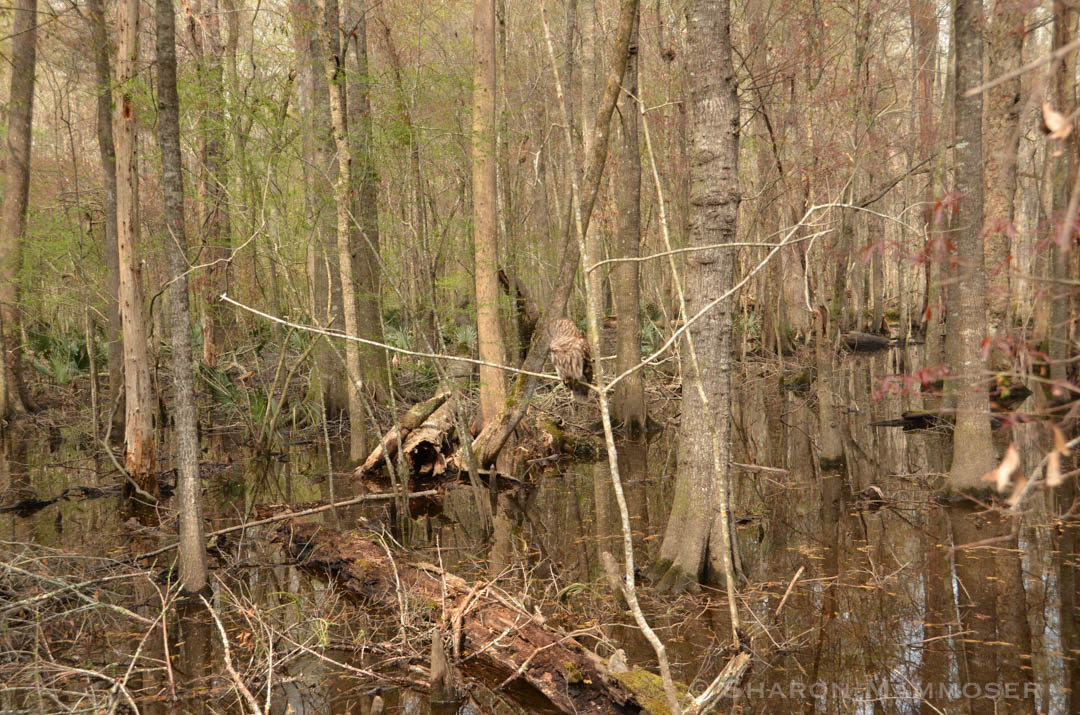
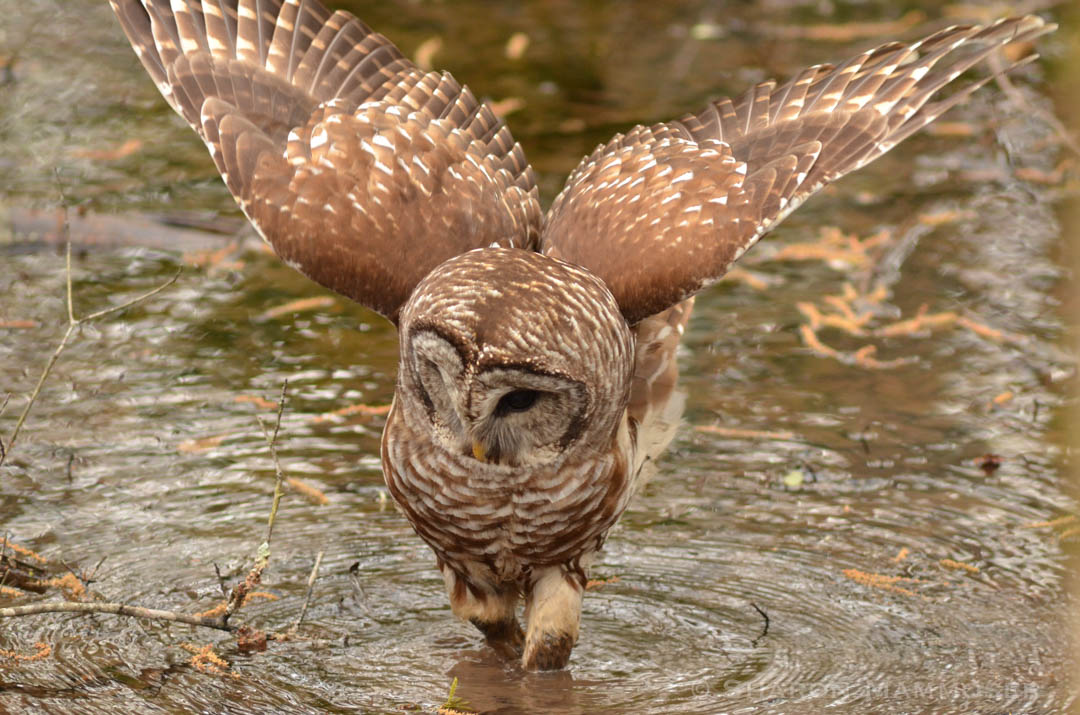
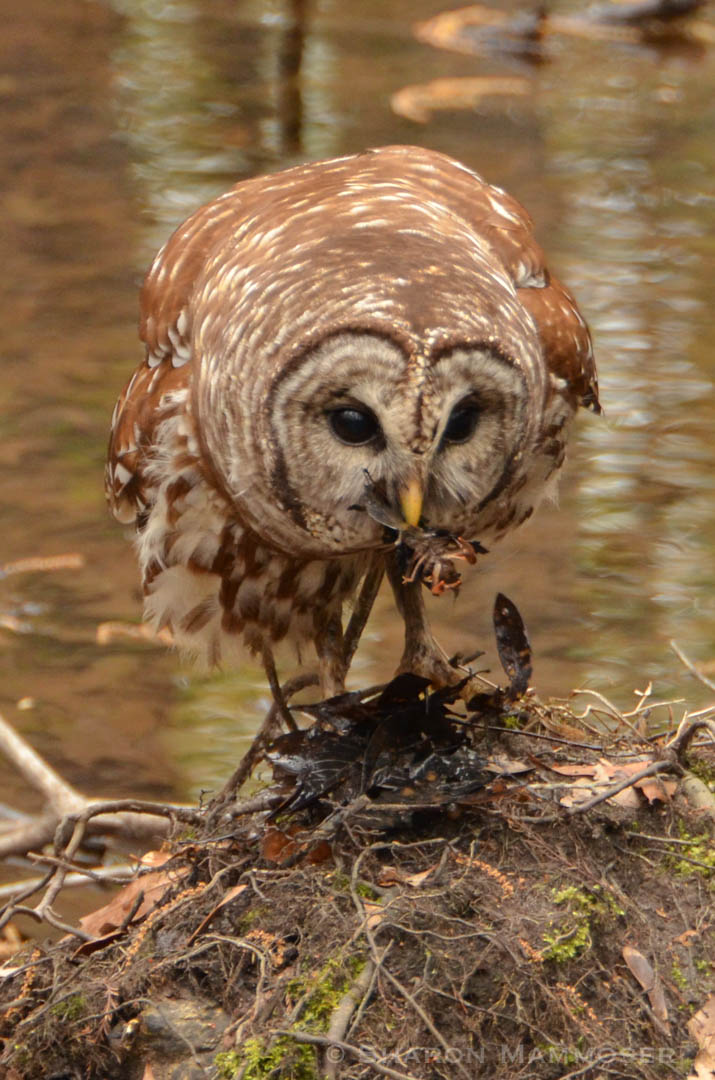
Barred owls mate for life. They prefer to nest in a tree hollow, but if that is unavailable, they may choose a nesting box or abandoned hawk or squirrel nest. Females incubate 2-3 white eggs, she is fed during this time by the male. Young owls will remain together near the nesting site for up to 6 months, a long time compared to other birds.
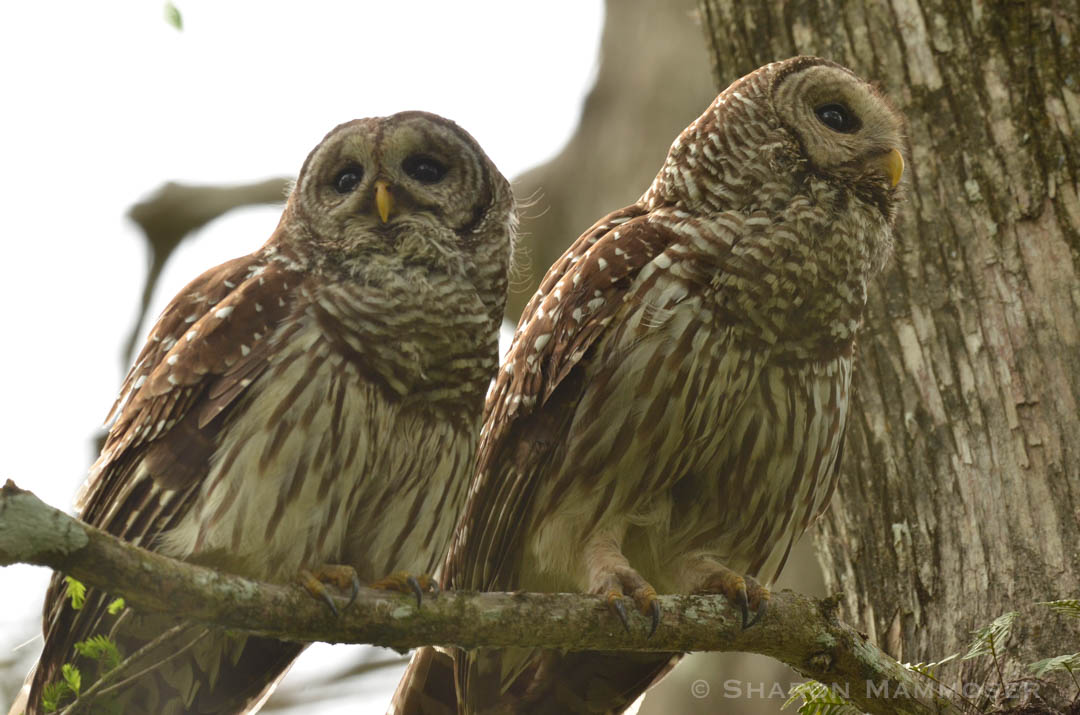
Have you seen or heard a barred owl near you?

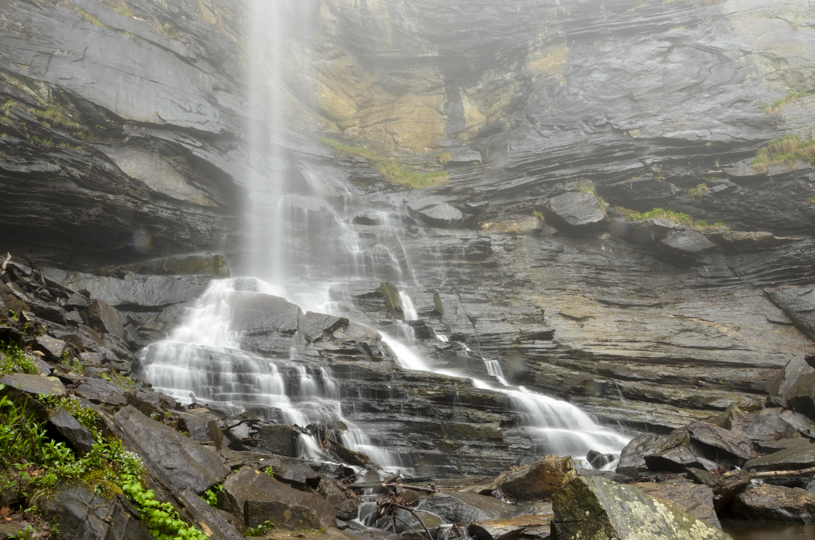

Merry Christmas and Happy New Year!
Thanks Pam, and to you too!
I have a pair of Barred owls that live nearby. Their call of ‘who cooks for you’ is a common refrain. However, during mating season they sound like wild gorillas arguing in the woods!! Love these birds.
Sara, I totally agree that they sound like gorillas arguing! For someone not knowing what they were, it’s easy to see how the sound might be scary. You’re lucky to get to hear in your neck of the woods!
What a beautiful creature! Thanks for sharing.
Helen, my pleasure. I hope you get to see one outside someday.